"*" indicates required fields
"*" indicates required fields
Enter your details below to enquire about a part exchange on this model with our sales department
"*" indicates required fields
 Mirror Coated Matte Spark Black
Mirror Coated Matte Spark Black
| Engine Type | Liquid-cooled, 4-stroke In-Line Four with Supercharger |
| Displacement | 998 |
| Bore x stroke | 76 x 55 mm |
| Compression ratio | 8.3:1 |
| Valve/Induction system | DOHC, 16 valves |
| Fuel system | Fuel injection: 50 mm x 4 with dual injection |
| Ignition | Digital |
| Starting | Electric |
| Lubrication | Forced lubrication, wet sump with oil cooler |
| Maximum Power | 228 kW {310 PS} / 14,000 rpm |
| Maximum power with RAM Air | 240 kW {326 PS} / 14,000 rpm |
| Maximum torque | 165 N•m {16.8 kgf•m} / 12,500 rpm |
| Transmission | 6-speed, dog-ring |
| Final Drive | Sealed chain |
| Clutch | Wet multi-disc, manual |
| Frame type | Trellis, high-tensile steel with Swingarm Mounting Plate |
| Rake/Trail | 108 mm |
| Wheel travel | Front - 120 mm / Rear - 135 mm |
| Steering angle | 27 / 27 |
| Seat Height | 830 mm |
| Curb Mass | 216 kg |
| Ground Clearance | 130 mm |
| Dimensions (L x W x H) | 2,070 x 850 x 1,160 mm |
| Wheelbase | 1,450 mm |
| Fuel Capacity | 17 litres |
| Brakes Front | Front - Dual semi-floating 330 mm Brembo discs. Caliper: Dual radial-mount, Brembo Stylema monobloc, opposed 4-piston / Rear - Single 250 mm disc. Caliper: Brembo, opposed 2-piston |
| Suspension front | 43 mm inverted fork with rebound and compression damping, spring preload adjustability and top-out springs |
| Suspension Rear | New Uni-Trak, Öhlins TTX36 gas-charged shock with piggyback reservoir, compression damping, rebound damping, preload adjustability and top-out spring |
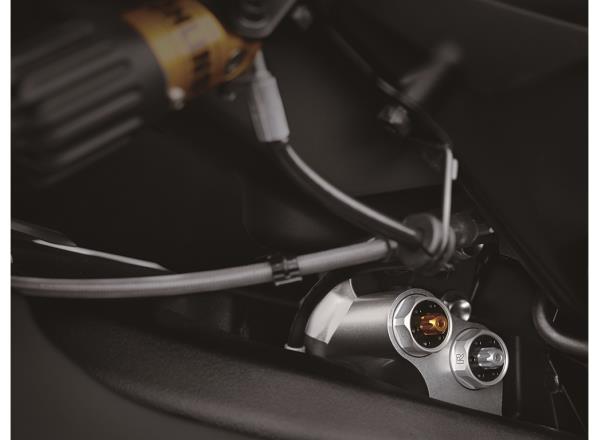
The addition of Öhlins’ highly acclaimed TTX shock offers numerous rider benefits: – Increased rear stability – excellent damping and increased riding comfort – Increased rear stability – Superb feedback from the road – More stability at speed.
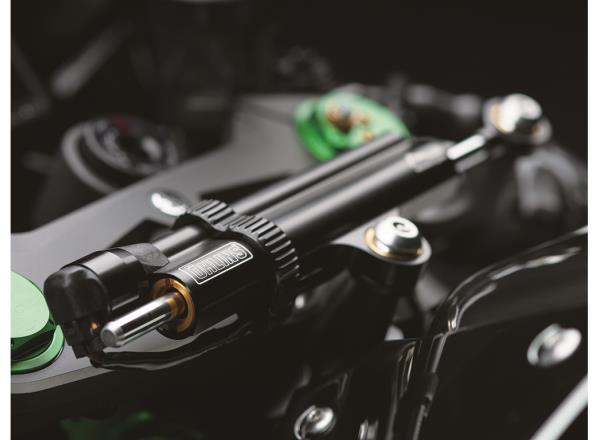
Kawasaki’s electronic steering damper was jointly developed with Öhlins, one of the most popular and respected manufacturers of steering dampers.

Having a single-sided swingarm allows the exhaust silencer to be mounted closer to the bike centreline, ensuring a high bank angle for sporty cornering.
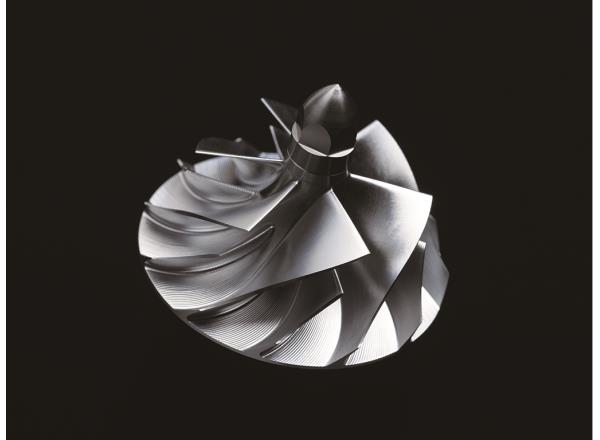
The supercharger used in the Ninja H2R was designed by Kawasaki motorcycle engine designers with assistance from other companies within the KHI Group, namely the Gas Turbine & Machinery Company, Aerospace Company, and Corporate Technology Division.

A pair of massive ø330 mm Brembo semi-floating discs with a thickness of t5.5 mm deliver superb braking force.
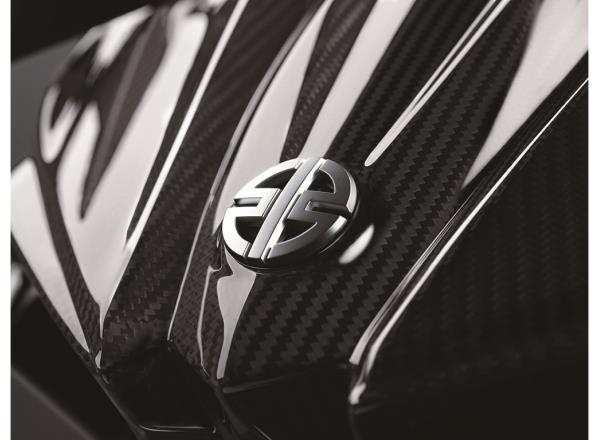
Special permission was obtained to use the River Mark on the Ninja H2R. Usually, its use on a product is reserved for models of historical significance.
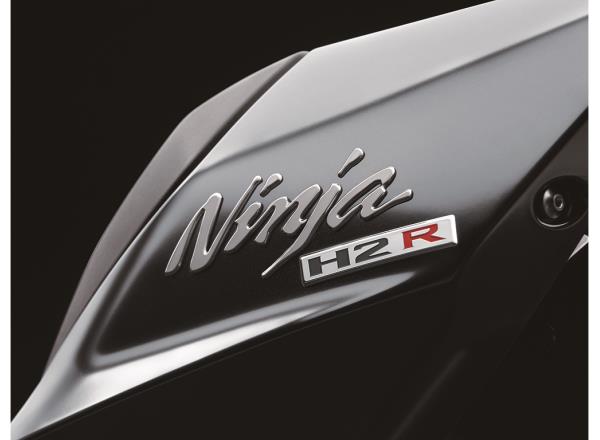
The silver-mirror paint used on the Ninja H2R was developed by Kawasaki specifically for motorcycles. Its highly reflective, glasslike metal appearance adds to the bike’s stunning design. While paint similar in appearance may be found in custom circles, this is its first use on a mass-production vehicle in either the automotive or motorcycle industries. Strict Kawasaki quality control measures ensure a long-lasting finish. The 2017 Ninja H2R is cloaked in a new variation of Kawasaki’s silver-mirror paint featuring a matte element.
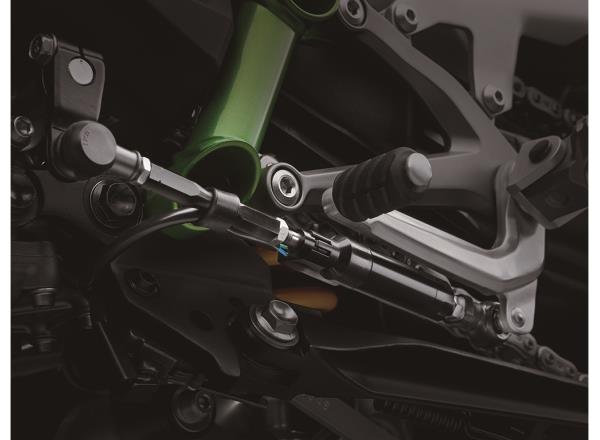
The Ninja H2R was the first Kawasaki motorcycle to be fit standard with a quick shifter. For 2017, the quick shifter also enables clutchless downshifts.
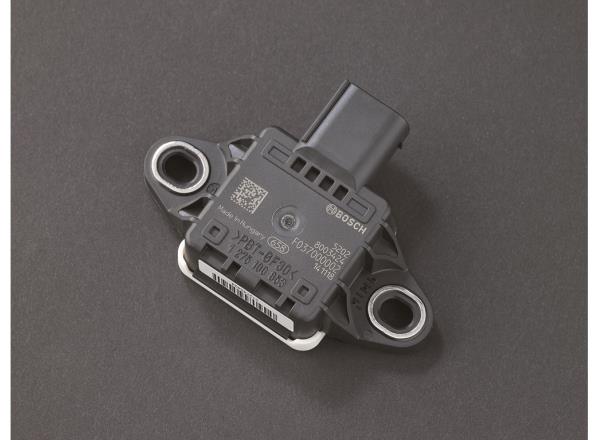
The use of Bosch’s compact IMU allows an additional layer of precision to be added to the already high-level KTRC, KLCM and KIBS.IMU enables inertia along 6 DOF (degrees of freedom) to be monitored. Acceleration along longitudinal, transverse and vertical axes, plus roll rate and pitch rate are measured.
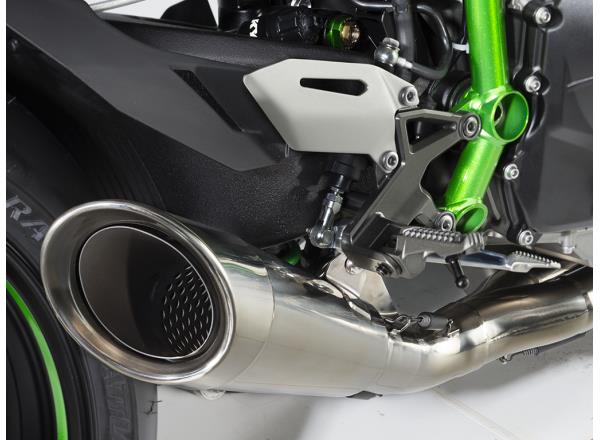
All-titanium exhaust system has a very simple design consisting of the header and collector pipes, a joint pipe, and a straightpipe megaphone-style silencer.
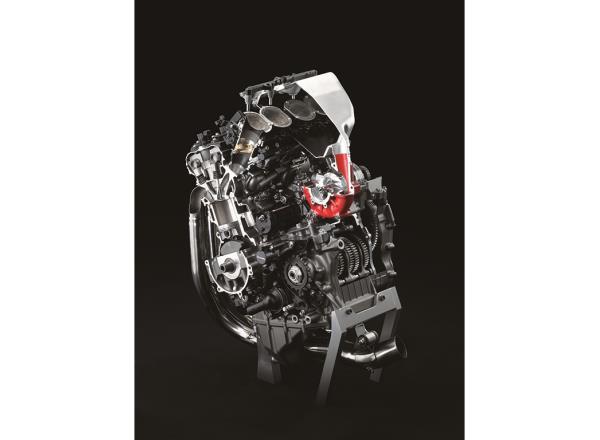
Despite it’s familiar In-Line Four configuration, the Ninja H2R power unit is loaded with technology developed specifically for this supercharged engine: some new, others with know-how from the Kawasaki Group.

It is no accident that when viewed from the side, the Ninja H2R does not seem to have the aggressive forward-canted stance of most modern supersport models.

KCMF monitors engine and chassis parameters throughout the corner—from entry, through the apex, to corner exit—modulating brake force and engine power to facilitate smooth transition from acceleration to braking and back again, and to assist riders in tracing their intended line through the corner. On the Ninja H2, KCMF oversees the following systems: – KTRC (including traction, wheelie and sliding control) – KLCM – KIBS (including pitching and corner braking control) – Kawasaki Engine Brake Control
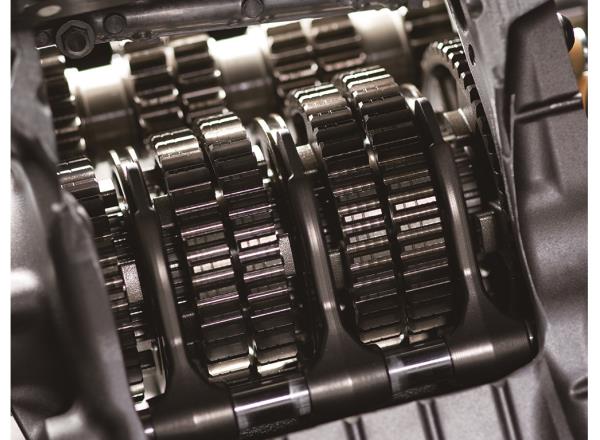
To facilitate smooth, quick shifting, a dog-ring type transmission was selected. This is the kind of transmission commonly found in MotoGP or Formula 1, and was developed with feedback from the Kawasaki Racing Team.
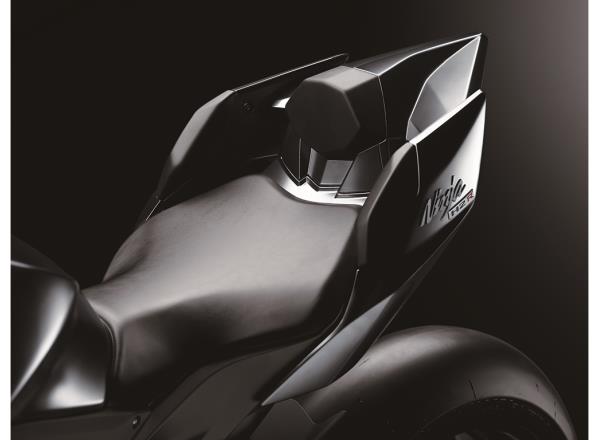
The riding position was designed for riding at ultra-high speed and circuit riding. To help support the rider during intense acceleration, hipsupporting pads flank the rear of the seat. The hip support is adjustable 15 mm backward to suit rider size.
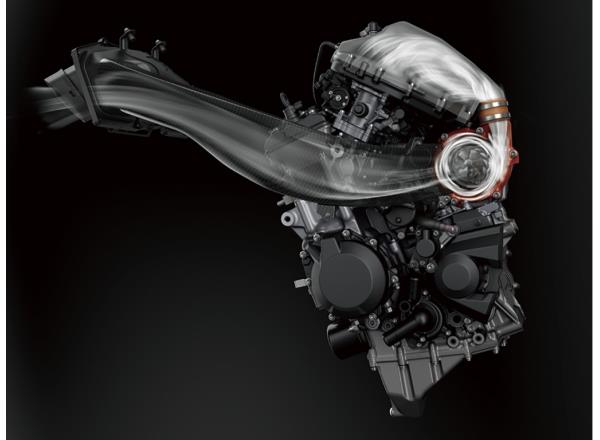
Air supplied to the supercharger enters via dual Ram Air intakes in the upper cowl. Their total frontal area is approximately 13,000 mm2—illustrating just how much air is needed to achieve the over 300 PS output.
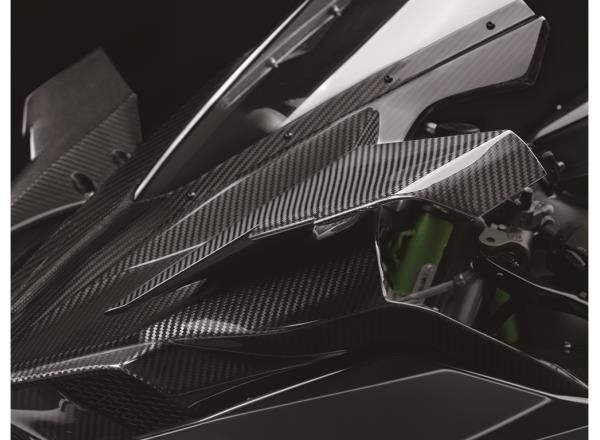
In place of mirrors, the Ninja H2R features CFRP wings mounted on the upper cowl.
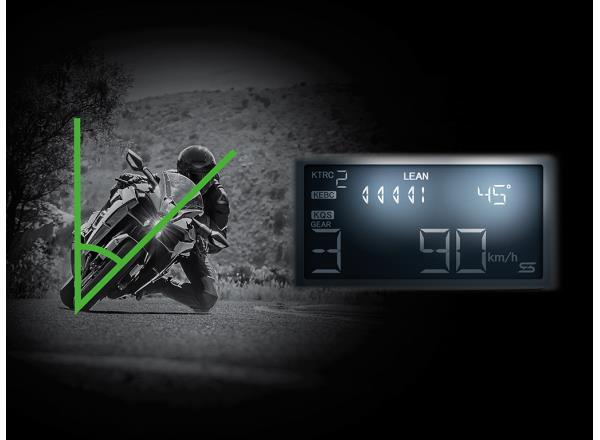
New instrument features include bank angle display and max bank angle recording function (possible thanks to the addition of the Inertial Measurement Unit)
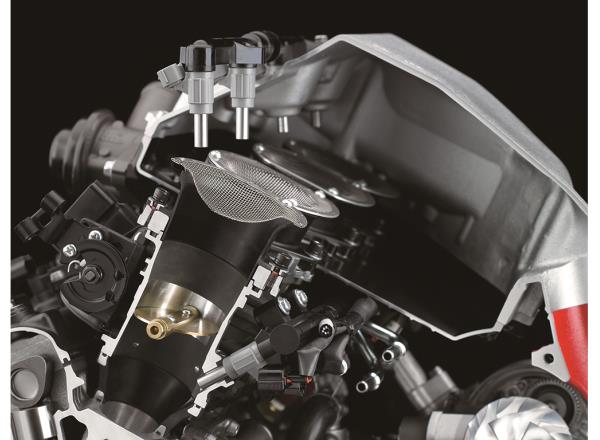
Kawasaki’s fully electronic throttle actuation system enables the ECU to control the volume of both the fuel (via fuel injectors) and the air (via throttle valves) delivered to the engine. Ideal fuel injection and throttle valve position results in smooth, natural engine response and the ideal engine output. The system also makes a significant contribution to reduced emissions

A high-quality hydraulic clutch offers less maintenance, ensuring the initial touch condition can be maintained. And with Brembo components, superb linearity and smooth actuation are also benefits.
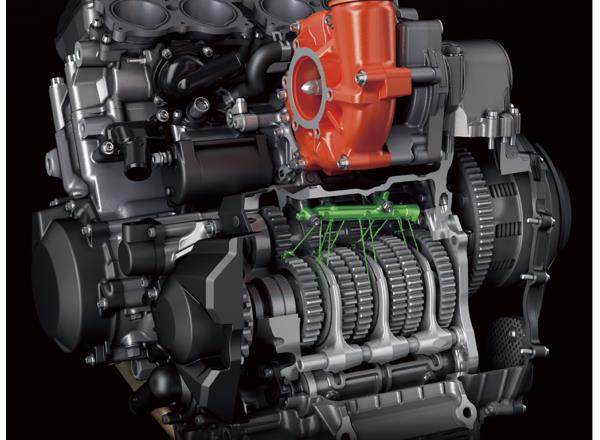
In the interest of keeping the engine compact and simple, a single lubrication system provides cooling oil for the engine components, supercharger and transmission.

A number of considerations were given to the cylinder head design to ensure the cooling performance needed for the supercharged engine. The large coolant passageways result in the ideal cooling for the combustion chamber.
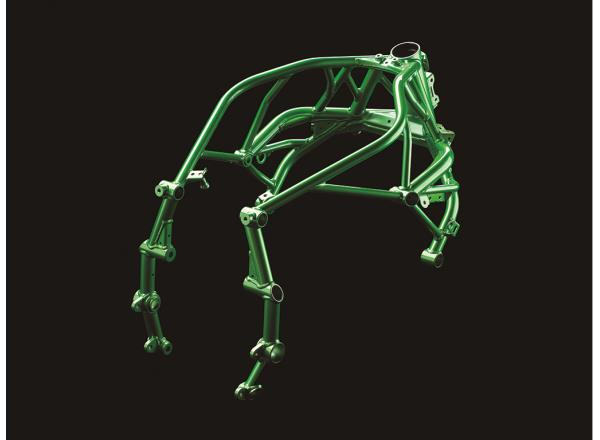
Using a trellis frame construction offered an elegant, lightweight solution to meeting the performance requirements for the chassis.
Kawasaki Chelmsford
Unit 9
Wycke Hill Business park
Wycke Hill
Maldon
CM9 6UZ
Tel: 01708 763360